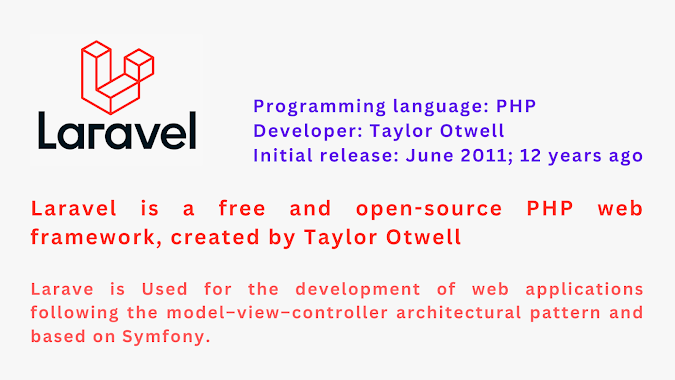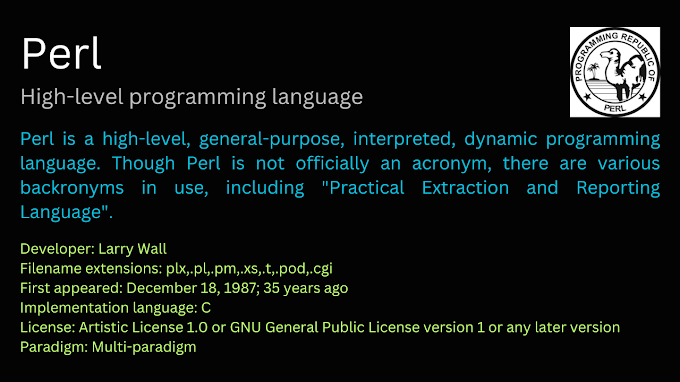I. Introduction
A. Definition And Overview Of Laravel
Laravel is a powerful and elegant PHP framework that has gained immense popularity among web developers. It provides a robust set of tools and features that simplify the process of building web applications. Laravel follows the Model-View-Controller (MVC) architectural pattern, making it highly scalable and maintainable. With its expressive syntax and extensive documentation, Laravel has become the framework of choice for many developers.

B. Importance And Popularity Of Laravel In Web Development
Laravel has experienced significant growth in popularity over the years due to its rich feature set and developer-friendly approach. It offers a wide range of functionalities that accelerate development time while ensuring code maintainability and scalability. Laravel's popularity can be attributed to its ease of use, elegant syntax, modular structure, and an active and supportive community. The framework is widely adopted for various projects, from small websites to large-scale enterprise applications.
Ii. Key Features Of Laravel
A. Elegant Syntax And Expressive Coding
One of the standout features of Laravel is its elegant and expressive syntax. It allows developers to write clean and readable code, enhancing productivity and reducing development time. Here's an example of Laravel's syntax for routing:
```php
Route::get('/users', function () {
return 'List of users';
});
```
B. Mvc Architecture
Laravel follows the Model-View-Controller (MVC) architectural pattern, which promotes separation of concerns and modular development. The MVC structure allows developers to organize their code into logical components, making it easier to maintain and update the application. For instance, here's how a basic controller looks in Laravel:
```php
class UserController extends Controller
{
public function index()
{
// Retrieve users from the model
$users = User::all();
// Pass users to the view
return view('users.index', ['users' => $users]);
}
}
```
C. Routing System
Laravel provides a powerful routing system that allows developers to define clean and SEO-friendly URLs. Routes can be easily defined and associated with specific actions in the application. Here's an example of a route that maps to a controller method:
```php
Route::get('/users', 'UserController@index');
```
D. Database Migration And Orm
Laravel simplifies database management with its built-in migration system. Migrations allow developers to version control the database schema and easily make changes as the application evolves. Laravel's ORM, Eloquent, provides an intuitive and expressive way to interact with databases. Here's an example of creating a migration and defining a model:
```bash
php artisan make:migration create_users_table --create=users
php artisan make:model User
```
E. Authentication And Authorization
Laravel makes implementing user authentication and authorization a breeze. It provides a comprehensive authentication system with ready-to-use controllers, views, and routes. Developers can easily define access control rules and permissions to protect various parts of their application. Here's an example of defining an authentication route:
```php
Auth::routes();
```
F. Caching Mechanisms
Laravel offers multiple caching mechanisms to improve the performance of web applications. Developers can leverage various caching drivers, such as Redis or Memcached, to store frequently accessed data and reduce database queries. Here's an example of caching query results using Laravel's cache system:
```php
$users = Cache::remember('users', 60, function () {
return User::all();
});
```
G. Testing And Debugging Tools
Laravel includes robust testing and debugging tools that facilitate the development of reliable and bug-free applications. It provides a testing suite for running unit tests and feature tests, ensuring that code changes don't introduce regressions. Laravel's debug bar offers insights into application performance, database queries, and more. Here's an example of a basic unit test in Laravel:
```php
class UserTest extends TestCase
{
public function testExample()
{
$response = $this->get('/');
$response->assertStatus(200);
}
}
```
H. Community And Ecosystem Support
Laravel has a vibrant and active community that contributes to its growth and success. The Laravel ecosystem offers a plethora of packages, libraries, and tools developed by the community to extend the framework's capabilities. Laravel Forge and Envoyer are examples of Laravel-specific tools that simplify server management and deployment processes.
Iii. Setting Up Laravel Development Environment
A. System Requirements
Before diving into Laravel development, it's essential to ensure that your system meets the requirements. Laravel requires PHP 7.4 or higher, along with several PHP extensions. Additionally, it requires a database server (e.g., MySQL, PostgreSQL) and a web server (e.g., Apache, Nginx).
B. Installation Methods (Composer, Laravel Installer)
Laravel can be installed using Composer, a popular PHP dependency manager. Composer allows you to easily manage Laravel's dependencies and keep your application up to date. Alternatively, Laravel can be installed using the Laravel installer, which provides a convenient command-line tool for scaffolding new Laravel projects.
To install Laravel via Composer, open a terminal and run:
```bash
composer global require laravel/installer
```
To create a new Laravel project using the Laravel installer, run:
```bash
laravel new project-name
```
C. Configuring The Development Environment
Laravel provides a `.env` file for configuring environment-specific settings, such as database credentials and application-specific variables. Developers can customize this file according to their development environment. It is essential to generate a unique application key using the `php artisan key:generate` command.
D. Creating A New Laravel Project
To create a new Laravel project, navigate to your desired directory and run the following command:
```bash
composer create-project --prefer-dist laravel/laravel project-name
```
Iv. Exploring Laravel's Mvc Architecture
A. Understanding The Model-View-Controller Pattern
The Model-View-Controller (MVC) pattern separates an application into three interconnected components: the Model, View, and Controller. The Model represents the data and business logic, the View displays the user interface, and the Controller handles user interactions and updates the Model and View accordingly. Laravel's MVC architecture provides a structured approach to building scalable and maintainable applications.
B. Creating Models, Views, And Controllers
In Laravel, models represent the data entities and encapsulate the database logic. Views are responsible for rendering the user interface, while controllers handle the application's logic and act as an intermediary between models and views. Laravel provides convenient commands to generate these components:
```bash
php artisan make:model User
php artisan make:controller UserController
php artisan make:view users.index
```
C. Defining Routes And Url Endpoints
Routes in Laravel define the URL endpoints of the application and map them to appropriate controllers and actions. Developers can define routes in the `routes/web.php` file for web-based endpoints and `routes/api.php` for API endpoints. Here's an example of a route definition in Laravel:
```php
Route::get('/users', 'UserController@index');
```
D. Handling Requests And Responses
Laravel's controllers handle incoming requests and provide corresponding responses. Controllers contain methods that correspond to different actions and interact with models and views. Here's an example of a controller method that retrieves users from the database and passes them to a view:
```php
class UserController extends Controller
{
public function index()
{
$
users = User::all();
return view('users.index', ['users' => $users]);
}
}
```
V. Working With Laravel's Database
A. Configuring Database Connections
Laravel's database configuration is defined in the `.env` file. Developers can specify the database connection details, including the driver, host, port, database name, username, and password. Laravel supports various databases, such as MySQL, PostgreSQL, SQLite, and SQL Server.
B. Database Migration And Schema Creation
Laravel's migration system allows developers to define database schema changes using code. Migrations enable version control and smooth collaboration among developers. Developers can create and run migrations using the Artisan command-line tool. Here's an example of creating a users table migration:
```bash
php artisan make:migration create_users_table --create=users
```
C. Querying The Database Using Eloquent Orm
Laravel's ORM, Eloquent, provides a simple and expressive syntax for querying and manipulating the database. Developers can define relationships between models, perform CRUD operations, and execute complex queries using Eloquent's intuitive methods. Here's an example of querying users using Eloquent:
```php
$users = User::where('status', 'active')
->orderBy('name')
->get();
```
D. Database Seeding And Factories
Laravel's database seeding allows developers to populate the database with test or dummy data. Seeding is useful for development and testing purposes. Laravel also provides factories to generate fake data based on predefined models. Here's an example of seeding users using a factory:
```php
public function run()
{
User::factory()
->count(10)
->create();
}
```
Vi. Building Web Applications With Laravel
A. Creating And Rendering Views
Laravel's view system enables developers to create dynamic and reusable templates. Blade, Laravel's templating engine, provides powerful features like template inheritance, conditional rendering, and looping. Here's an example of a basic Blade view:
```php
<!DOCTYPE html>
<html>
<head>
<title>Laravel App</title>
</head>
<body>
<h1>Hello, {{ $name }}</h1>
</body>
</html>
```
B. Form Handling And Validation
Laravel simplifies form handling and validation by providing convenient methods and helpers. Developers can define form routes, create forms using Laravel's form builder, and validate incoming data effortlessly. Here's an example of a form route and validation in Laravel:
```php
Route::post('/users', 'UserController@store');
public function store(Request $request)
{
$validatedData = $request->validate([
'name' => 'required|max:255',
'email' => 'required|email|unique:users',
'password' => 'required|min:8',
]);
// Store the user in the database
}
```
C. Working With Sessions And Cookies
Laravel provides a convenient and secure way to manage sessions and cookies. Developers can easily store and retrieve data from sessions and set cookies for various purposes. Here's an example of storing data in the session and setting a cookie in Laravel:
```php
// Storing data in the session
$request->session()->put('key', 'value');
// Retrieving data from the session
$value = $request->session()->get('key');
// Setting a cookie
$response = new Response('Hello World');
$response->cookie('name', 'value', $minutes);
```
D. Implementing Authentication And Authorization
Laravel offers a complete authentication system that includes registration, login, and password reset functionalities. Developers can easily configure authentication routes and views, customize the authentication logic, and implement authorization policies. Here's an example of defining authentication routes and protecting routes with authentication:
```php
Auth::routes();
Route::group(['middleware' => 'auth'], function () {
// Protected routes
});
```
E. Integrating Third-Party Libraries And Packages
Laravel's ecosystem provides numerous packages and libraries that can be easily integrated into Laravel applications. From payment gateways to image processing, developers can leverage these packages to extend the functionality of their applications. Laravel's Composer integration simplifies the installation and management of third-party packages.
F. Error Handling And Logging
Laravel offers robust error handling and logging mechanisms. Developers can configure custom error pages, handle exceptions, and log errors for debugging and monitoring purposes. Laravel's logging system allows developers to log messages with various severity levels and store them in different channels.
Vii. Optimizing And Scaling Laravel Applications
A. Caching Techniques (Database Caching, Query Caching)
Laravel provides caching mechanisms to enhance application performance. Developers can cache database queries, rendered views, and other computationally expensive operations to reduce response times. Laravel supports various caching drivers, including Redis and Memcached.
B. Optimizing Database Queries
Laravel offers powerful query builder methods and optimizations to improve database query performance. Developers can leverage techniques like eager loading, query caching, and indexing to optimize their database queries. Laravel's query builder provides an expressive and fluent syntax for building complex queries.
C. Performance Profiling And Debugging
Laravel's debug bar and built-in profiling tools help developers identify performance bottlenecks in their applications. Developers can measure query execution times, memory usage, and other metrics to pinpoint areas that need optimization. Laravel also integrates well with external profiling tools like Xdebug and Blackfire.
D. Scaling Laravel Applications (Load Balancing, Caching Layers)
As Laravel applications grow, scaling becomes crucial. Developers can employ techniques like load balancing, horizontal scaling, and caching layers to ensure high availability and handle increased traffic. Laravel applications can be deployed across multiple servers and managed using tools like Laravel Forge and Envoyer.
Viii. Testing And Deployment
A. Writing Unit Tests And Feature Tests
Laravel promotes test-driven development by providing a robust testing suite. Developers can write unit tests and feature tests to ensure the correctness of their code. Laravel's testing tools include PHPUnit for unit testing and Laravel Dusk for browser automation and end-to-end testing.
B. Continuous Integration And Deployment (Ci/Cd) Pipelines
Laravel integrates seamlessly with popular CI/CD platforms like Jenkins, Travis CI, and GitHub Actions. Developers can set up automated build, test, and deployment pipelines to streamline the development process. Continuous integration ensures that code changes are thoroughly tested before being deployed to production.
C. Deploying Laravel Applications To Production Servers
Deploying Laravel applications to production servers can be done through various methods, including FTP, SSH, and cloud-based deployment services. Tools like Laravel Forge simplify the deployment process by providing a user-friendly interface to manage servers, SSL certificates, and deployments.
D. Performance Monitoring And Optimization In Production
Once a Laravel application is deployed to production, monitoring and optimization become essential. Developers can use tools like New Relic, Datadog, or custom logging and monitoring solutions to track performance metrics, identify bottlenecks, and make necessary optimizations to ensure smooth operation.
Ix. Laravel Community And Resources
A. Laravel Documentation And Official Website
Laravel's official documentation is an extensive resource that provides in-depth information about the framework's features, components, and best practices. The documentation covers everything from installation and configuration to advanced topics like queues, events, and broadcasting. Laravel's website (laravel.com) also provides news, tutorials, and links to community resources.
B. Laravel Forge, Envoyer, And Other Laravel-specific tools
Laravel Forge is a server provisioning and management tool designed specifically for Laravel applications. It simplifies the deployment and server management process, allowing developers to focus on building their applications. Laravel Envoyer is a zero-downtime deployment tool that integrates seamlessly with Laravel Forge.
C. Laravel Community Forums And Social Media Groups
The Laravel community is vibrant and active, with dedicated forums and social media groups where developers can seek help, share knowledge, and engage in discussions. The Laravel subreddit (/r/laravel) and the Laravel community forum (laracasts.com) are popular platforms for community interaction.
D. Laravel Conferences And Meetups
Laravel conferences and meetups provide opportunities for developers to network, learn from industry experts, and stay updated with the latest trends in Laravel development. Laracon, the official Laravel conference, is held annually and features insightful talks, workshops, and networking events.
X. Conclusion
A. Recap Of Laravel's Key Features And Benefits
Laravel is a powerful PHP framework that offers a wide range of features and benefits for web development. Its elegant syntax, expressive coding style, and MVC architecture provide developers with a structured and efficient approach to building modern web applications. Laravel's rich ecosystem, robust testing tools, and extensive documentation make it a popular choice among developers.
B. Final Thoughts On Using Laravel For Web Development
Laravel simplifies the web development process by providing a clean and intuitive API, comprehensive documentation, and a supportive community. Its extensive feature set, including database migration, authentication, and caching, saves developers time and effort. Laravel's focus on modern PHP practices and its commitment to continuous improvement ensure that it remains a top choice for web application development.
C. Future Trends And Developments In The Laravel Ecosystem
The Laravel ecosystem continues to evolve and adapt to the changing needs of web development. As PHP and Laravel advance, developers can expect further improvements in performance, security, and scalability. Additionally, the Laravel community will continue to contribute new packages, tools, and resources, expanding the framework's capabilities and making web development even more efficient.
In conclusion, Laravel provides developers with a robust and elegant framework for building modern web applications. Its key features, such as its expressive syntax, MVC architecture, and extensive ecosystem, make it a popular choice for developers worldwide. By following the best practices and leveraging the powerful tools and resources available, developers can unlock the full potential of Laravel and create exceptional web applications.



0 Comments
Welcome! Please Comment Without Any Hesitation.
Thank You